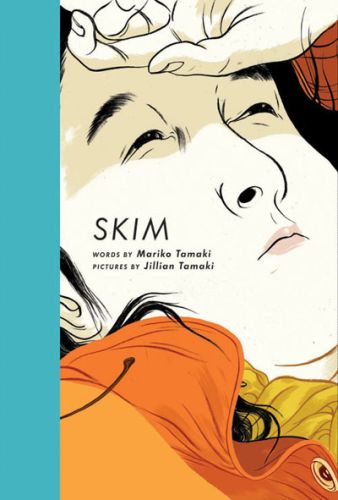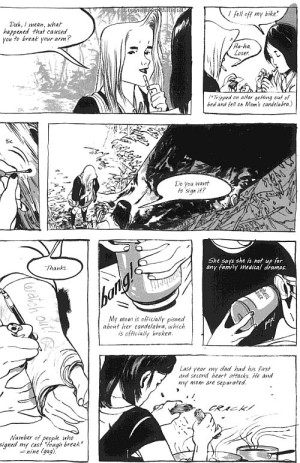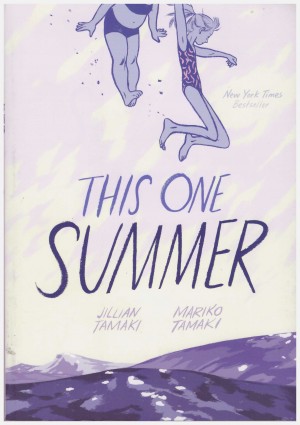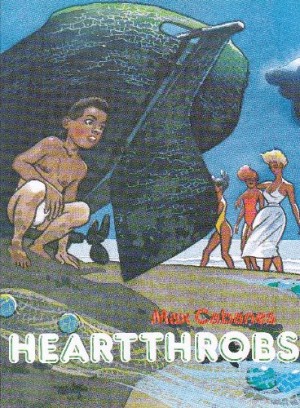Review by François Peneaud
Kimberly Keiko Cameron is a young, somewhat plump, would-be Goth girl whose everyday life as a budding adult is the subject of the excellent Skim, set in 1993 in an all-girls private school around Toronto. No, this isn’t a new version of Mädchen in Uniform, although we do get lesbian references, as with the street named “Deneuve”, where one of the main character lives.
Kim’s best friend Lisa doesn’t understand her, one of their classmates finds grief very rewarding when her boyfriend kills himself, and Kim–or “Skim” as she’s nicknamed by her friends–might be falling in love with her English and drama teacher, a kind of post-hippie woman who remains something of a cypher throughout the book. This is appropriate enough as it’s Skim’s story and she’s still discovering what the world is all about.
That is far from the only intelligent choice made by writer Mariko Tamaki. Even more impressive is the way she uses the literary device of having the story narrated by Skim herself through her diary entries, by scratching some words, showing partial rewordings, and the like. Used only sparingly, this technique greatly enhances the realism and the involvement of the reader. The diary also gives a glimpse of Skim’s inner life, while at the same time hiding very important things who has to fill the void left by the unstated feelings and thoughts of the main character. The reader keeps his/her distance from the character, while the character tries to find a bearable distance from the overwhelming feeling of loss of control that a lot of people experience at her age. It removes any voyeuristic quality.
Between Skim’s secret crush, which she doesn’t share even with Lisa, and the boy’s death, which resonates throughout the entire book, the story could have lapsed into melodrama, but doesn’t. Instead, we have a sensitive and caring portrayal of youth at a certain time, in a certain place–and as with all good stories, the specific becomes universal.
Jillian Tamaki, the cousin of the writer, is an illustrator with only a few comics behind her at the time. Her storytelling is solid, with a balance of small panels and full pages, in a way reminiscent of Craig Thompson’s work on Blankets. One can’t help thinking that her faces look somewhat like early Chris Bachalo’s, especially his work on Shade, the Changing Man. In any case, her art is very atmospheric and easily draws the reader into the story, without manipulating his/her feelings.
Skim is a complete success; it’s not surprising that this graphic novel won the 2008 Ignatz Award as Outstanding Graphic Novel and the 2008 Doug Wright Award as Best Book as well as the 2009 Joe Shuster Award for the writer. Kim herself is an engaging character, with her qualities and shortcomings, her hopes and unsaid dreams, her life still in front of her.
The creative team would reunite in 2014 for This One Summer.





